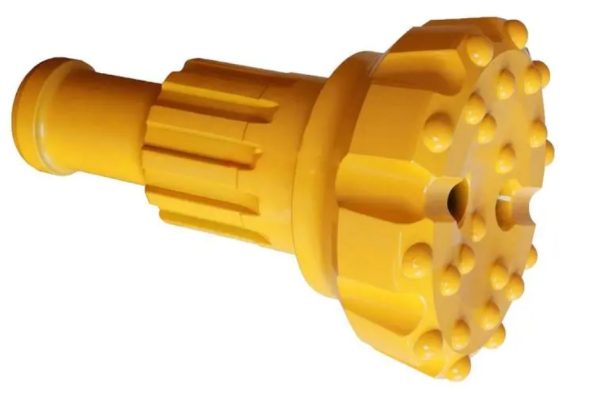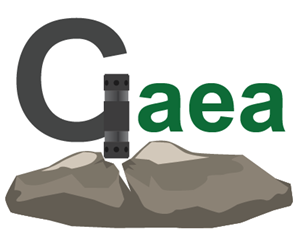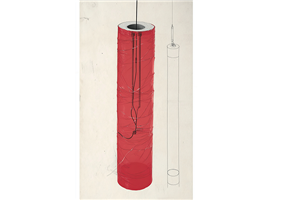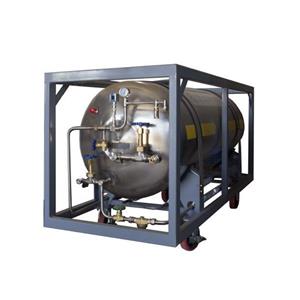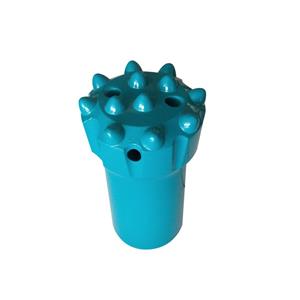Instructions for using down-the-hole drill bits
There are four main end face designs for high-pressure down-the-hole drill bits: convex end face, flat end face, concave end face and deep concave center end face. Carbide mostly uses ball teeth, spring teeth or a combination of ball teeth and spring teeth.
1. Convex end face type
This drill bit is divided into two forms, single boss and double boss end face, the latter is mainly used for down-the-hole drill bits with larger diameters. Convex end face down-the-hole drill bits can maintain a high rock drilling rate when drilling medium-hard and hard abrasive rocks, but the straightness of the drilled hole is poor, and it is not suitable for rock drilling projects with high requirements for blasthole straightness.
2. Flat end face type
This type of drill bit is relatively strong and durable, suitable for drilling hard and extremely hard rocks, and also suitable for drilling medium-hard rocks and soft rocks with low requirements for blasthole straightness.
3. Concave end face type
This type of drill bit has a concave concave part on the end face, which is a slight nucleation effect formed during the rock drilling process to maintain the centering performance of the drill bit. The drilled blasthole has good straightness. This drill bit has good powder removal effect and fast drilling speed. It is the most commonly used down-the-hole drill bit on the market.
4. Deep concave center end face type
This type of drill bit is evolved from the same type of ball tooth drill bit. There is a deep concave center part in the center of the end face of the drill bit. It is used for nucleation during rock drilling and to ensure the straightness of the blasthole when drilling deep holes. It is only suitable for drilling soft rocks and medium-hard rocks.
In order to use the down-the-hole drill bit correctly and ensure the rock drilling speed and service life of the drill bit, the following points must be noted:
1
Select the down-the-hole drill bit according to the rock conditions (hardness, abrasiveness) and the type of drilling rig (high wind pressure, low wind pressure). Different forms of alloy teeth and tooth layout methods are suitable for drilling different rocks. Choosing the right DTH drill bit is the prerequisite for achieving the best use effect;
2
When installing the DTH drill bit, place the drill bit smoothly into the DTH hammer holder sleeve, and do not collide it hard to avoid damaging the drill bit tail handle or holder sleeve;
3
During the rock drilling process, ensure that the compressed air pressure of the DTH drill is sufficient. If the hammer works intermittently or the blasthole powder is not discharged smoothly, the compressed air system of the DTH drill should be checked to ensure that there is no rock debris in the hole during the drilling process;
4
If metal objects are found to fall into the hole, they should be sucked out with a magnet or other methods in time to avoid damaging the drill bit;
5
When replacing the drill bit, pay attention to the size of the blasthole that has been drilled. If the drill bit diameter is excessively worn, but the blasthole has not been drilled, do not replace the new drill bit to avoid jamming. Used old drill bits with roughly the same wear diameter can be used to complete the operation.
